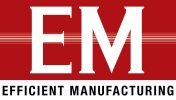In a significant move to reinforce its position as a comprehensive procurement partner, ProcMart has acquired a packaging facility in Aurangabad. This step marks the beginning of a larger vertical integration strategy aimed at enhancing production control, improving logistics, and delivering end-to-end procurement solutions. In conversation with Efficient Manufacturing, Sachin Jain, Chief Financial & Strategy Officer at ProcMart, shares insights on how this acquisition supports the company’s long-term vision, elevates its value proposition for Fortune 500 clients, and aligns with its sustainability and regional development goals.
1. What strategic objectives does ProcMart aim to achieve through the acquisition of the Aurangabad packaging facility?
Through the acquisition of the Aurangabad packaging facility, ProcMart aims to deepen its capabilities via vertical integration and strengthen its position as a comprehensive procurement partner. This strategic investment allows the company to gain greater control over production quality, reduce lead times, and optimise logistics. It serves as a foundational step in ProcMart’s long-term vision to offer end-to-end solutions across the entire indirect procurement value chain.
2. How does backward integration into packaging manufacturing enhance ProcMart’s value proposition to clients, especially Fortune 500 companies?
Backward integration into packaging manufacturing significantly enhances ProcMart’s ability to deliver reliable, timely, and high-quality solutions to its clients, particularly Fortune 500 companies. By owning and operating its own packaging facility, ProcMart ensures consistency in supply, tighter quality control, and seamless coordination across procurement cycles. This move also reinforces the company’s commitment to environmental responsibility, an increasingly critical criterion for large global enterprises.
3. Can you elaborate on how this acquisition fits into ProcMart’s broader roadmap of vertical integration?
The acquisition aligns seamlessly with ProcMart’s broader roadmap of vertical integration. It represents the first of several planned moves into in-house production across key categories such as MRO, biofuels, utility services, and non-specialty chemicals. By building infrastructure that enables direct control over strategic procurement categories, ProcMart is setting the stage to offer a one-stop procurement platform that reduces complexity and drives operational excellence for its enterprise clients.
4. How does sustainable packaging align with ProcMart’s ESG goals and those of its enterprise clients?
The integration of sustainable packaging solutions directly supports ProcMart’s ESG agenda while also helping its clients advance their own sustainability commitments. The Aurangabad facility is powered by biofuel-based boilers, offering a low-carbon alternative to traditional manufacturing methods. This focus on sustainability strengthens ProcMart’s value proposition to environmentally conscious enterprises and aligns with the increasing demand for green procurement practices across global supply chains.
5. Can you share more on the team operating this facility — how is local talent being leveraged?
The Aurangabad facility is operated by a team of over 50 skilled professionals, many of whom come from the local talent pool. ProcMart places strong emphasis on inclusive growth and regional development by offering employment opportunities, skill development, and a dynamic work environment. By leveraging local talent, the company ensures operational continuity and contributes meaningfully to the industrial ecosystem of Maharashtra.
6. What kind of machinery and automation technologies are being utilised at the plant?
The facility features a blend of fully automatic and semi-automatic machinery, enabling both high efficiency and flexible production capabilities. These technologies are geared toward maintaining high output volumes, ensuring consistent quality, and reducing turnaround times. As part of its future-ready vision, ProcMart also plans additional investments to further scale the plant’s monthly production capacity to 2,500 metric tons, which would unlock up to USD 150 million in additional annual sales potential.













